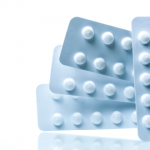 “Gout flares are painful and disabling. Understanding the central role of the NLRP3 [NOD-like receptor pyrin domain-containing protein 3, cryopyrin, or NALP3] inflammasome in the initiation of the gout flare has led to new treatment approaches for gout,” says Nicola Dalbeth, MD, FRACP, head of the Department of Medicine, University of Auckland, New Zealand. “However, ultimately, gout flares should be prevented by removing the underlying cause with urate-lowering therapy. Maintaining the serum urate below 6 mg/dL will dissolve deposited monosodium urate (MSU) crystals, which treats the underlying cause of the gout flare and prevents ongoing NLRP3 inflammasome activation.”
“Gout flares are painful and disabling. Understanding the central role of the NLRP3 [NOD-like receptor pyrin domain-containing protein 3, cryopyrin, or NALP3] inflammasome in the initiation of the gout flare has led to new treatment approaches for gout,” says Nicola Dalbeth, MD, FRACP, head of the Department of Medicine, University of Auckland, New Zealand. “However, ultimately, gout flares should be prevented by removing the underlying cause with urate-lowering therapy. Maintaining the serum urate below 6 mg/dL will dissolve deposited monosodium urate (MSU) crystals, which treats the underlying cause of the gout flare and prevents ongoing NLRP3 inflammasome activation.”
Dr. Dalbeth is co-author of a review that is part of a series on immunology for rheumatologists published in Arthritis & Rheumatology (A&R).1 In this new installment, Dr. Dalbeth and Raewyn Poulsen, PhD, senior research fellow and senior lecturer in the Department of Pharmacology, University of Auckland, review gout and NLRP3 (NACHT-LRR-PYD-containing protein 3) inflammasome biology.2
Insights for Rheumatologists
“Understanding the molecular pathways driving the gout flare provides key insight into why gout flares only occur intermittently in joints with MSU crystal deposits, why alcohol consumption or fatty foods can trigger a gout flare, and why gout flares self-resolve even in the absence of treatment,” explains Dr. Poulsen.
“In this review, we also discuss how current pharmaceutical treatments for gout flare prophylaxis and treatment act on the pathways driving gout flare, providing mechanistic insight into their clinical efficacy,” Dr. Poulsen says.
The review initially covers the histopathology of gout. The authors describe the three stages of acute inflammation in gout: initiation, including the central role of NLRP3 inflammasome activation, NLRP3 inflammasome priming, and NLRP3 inflammasome activation; mobilization, via neutrophilic infiltration; and self-resolution. The authors present a clinical case of a patient with a typical gout flare and detail the role of the NLRP3 inflammasome in acute MSU crystal-induced inflammation. The review outlines treatment strategies for gout within the framework of NLRP3 inflammasome-mediated acute inflammation. The authors conclude with a follow-up of the clinical case.
The review includes a table displaying the anti-inflammatory mechanisms of medications used to treat gout flares, a figure and legend detailing the development and self-resolution of the gout flare, and more than 100 references.
The NLRP3 Inflammasome
“Activation of the NLRP3 inflammasome in monocytes/macrophages is the central mechanism driving the gout flare,” Dr. Poulson says. “Normally activated in response to pathogen attack or tissue damage, the NLRP3 inflammasome drives production of the inflammatory cytokine IL [interleukin] 1β, leading to further immune cell recruitment, particularly neutrophilic infiltration.”


